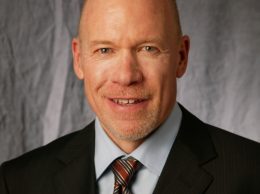Opinion: We might not see the inflation bus coming until it’s run us over
By John Grace
Everybody wants to know the date things go sideways. As I am fond of saying, if we are jaywalking across the street it’s not the bus you do see that can disrupt our day, it’s the bus we didn’t see, couldn’t name, and was impossible to time.
Global bubbles from the U.S. to Europe to Asia have been artificially pushed by stimulus for so long that we are literally at the point where they could burst for no big reason. As Dent Research illuminates, was there a trigger for Japan’s 62% crash from late 1989 to 1992? Japan’s economy looked like a well-tuned piano in late 1989.
How about in early 2000, when the first tech bubble crashed by 78%? There had been no signs of recession. In fact, the recession didn’t really set in until late 2000 and into 2001, several months after stocks started to crash.
Something’s happening here in color and in real time. If you’re worried that the Federal Reserve might do too little too late to buttress inflation concerns, you can take comfort from the Fed’s rate-setting committee that there is an easy shift away from easy-money policies.
“The problem is that the instrument in the Fed’s toolbox for lifting rates are potentially more harmful than they once were-and using them is likely to induce pangs of regret,” Judy Shelton wrote in The Wall Street Journal on May 27.
Central banks around the world make the case that they have all of the tools they need to keep economies from getting too hot or too cold. To do so means there must be a magical thermostat connected to the machines that simply whirl away, shifting from cold to hot air so that everyone is as comfortable as can be to keep on spending mindlessly.
But despite what you hear from a large number of Federal Reserve members who are determined to encourage you to wear rose-colored glasses, retail giant Costco may see things clearly that the current inflationary spike the U.S. is experiencing will be anything but transitory.
“Chip shortages are impacting many items from an inflation standpoint, some items more than others,” Costco CFO Richard Galanti said during the company’s last earnings call. “And with regard to containers and shipping, transportation costs have increased as well. This will continue — the feeling is that this will continue for the most part of this calendar year.”
Galanti went on to say, “We’ve had a lot of questions about inflation over the past few months. There have been and are a variety of inflationary pressures that we and others are seeing. Inflationary factors abound.”
Those factors include increased freight expenses; higher labor costs; more transportation demand on top of the container shortage; port delays; shortages of everything from chips to oils and chemical supplies from facilities struck by the Gulf freeze; storms; and commodity prices.
In fact, the U.S. Commerce Department found that core personal consumption expenditure (PCE) price index increased 3.1% in April, father than was expected. At the same time, “the Consumer Price Index (CPI) rose in April at the fastest pace since September 2008, clocking in with a 4.2% increase versus a year ago,” per Yahoo Finance.
Where did inflation come from, you ask? Let me share with you from “A Tarifically Bad Idea,” Chapter 10 of my book, “Making Finance Make Sense; Striving to Win”: “On March 9, 2018, in an effort to restore an American industry to its previous luster, then-President Donald Trump garishly imposed a 25% tariff on steel imports and a 10% tariff on aluminum imports. Beijing responded quickly, escalating the dispute. China intends to impose tariffs with ‘equal scale, equal intensity’ on imports from the U.S., and all of the country’s earlier trade commitments are now off the table.”
A tariff is a duty or tax placed on particular goods by the government. The design is to make foreign good more costly, giving an advantage to domestic manufacturers of the same products who don’t have to pay the tax.
Let’s say you need a new car and you have two at the top of your list. If Product A is 25% more expensive than Product B and there is no distinguishable difference in quality, it’s reasonable to believe most consumers will vote with their wallet and buy the cheaper car — no matter its origin
High inflation is often unstable and unpredictable, which can keep the economy from performing at its best. Unevenly rising prices reduce the purchasing power of consumers, and this erosion of real income may be the largest cost of inflation. And remember, markets abhor uncertainty.
• John Grace is the president and founder of Investor’s Advantage Corp. in Westlake Village.










